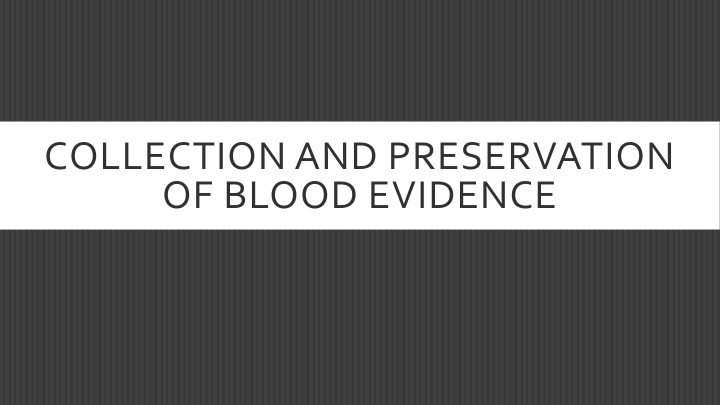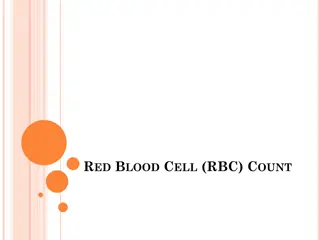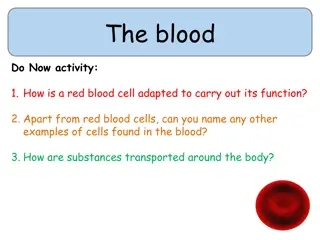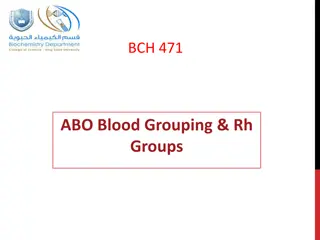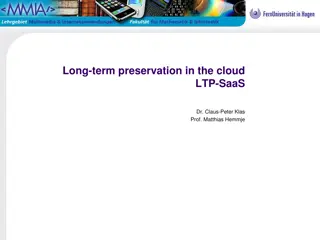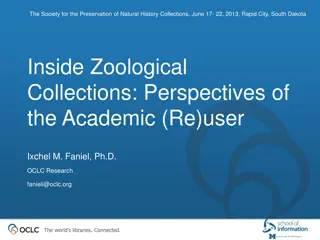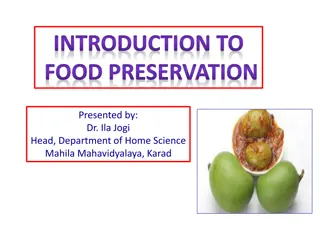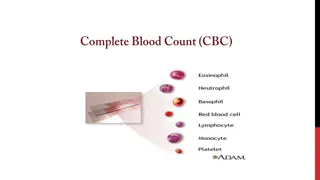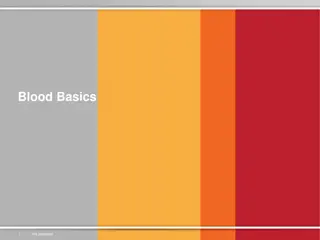Blood Evidence Collection and Preservation Guidelines
Learn about the proper collection and preservation methods for liquid blood, dried stains, stained clothing, swabs of stains, and envelopes in forensic investigations. Follow detailed instructions for identification, preservation, wrapping, and packing to ensure the integrity of blood evidence.
Download Presentation

Please find below an Image/Link to download the presentation.
The content on the website is provided AS IS for your information and personal use only. It may not be sold, licensed, or shared on other websites without obtaining consent from the author.If you encounter any issues during the download, it is possible that the publisher has removed the file from their server.
You are allowed to download the files provided on this website for personal or commercial use, subject to the condition that they are used lawfully. All files are the property of their respective owners.
The content on the website is provided AS IS for your information and personal use only. It may not be sold, licensed, or shared on other websites without obtaining consent from the author.
E N D
Presentation Transcript
COLLECTION AND PRESERVATION OF BLOOD EVIDENCE
Collection of Liquid Blood Collection of Dried Stains Moist Stains Wear gloves. Absorb into sterile cotton swab. Wrap stained item in paper bag or box. Air dry all items before submission. Let air dry. Seal and label. Keep out of direct heat or sunlight. Seal and label. Large objects: Moisten swab with distilled water, rub area with swab, and package swab. Package separately in paper. Label and seal packages. Scrapping Never use plastic.
DRY STAINS Identification: On outside of box, paper packet, or envelope: Type of specimens, date secured, CSI or investigator s initials, case name and number, and where sample was taken from. Evidence -Collect as much of the stain as possible. Submit entire stained object. A swabbing should be submitted when the item can not be submitted due to size, shape or hazardous nature. If swabbing, collect as much stain onto as few swabs as possible. Preservation: Keep dry. Wrapping & Packing: Tops, ends and all folds sealed. Never package in plastic. Always use paper. Miscellaneous: Dry completely under natural conditions before packaging.
STAINED CLOTHING OR FABRIC Identification: Type of specimens, date obtained, CSI or investigator s initials, case name and number, and owner of garment. Evidence -As found. Submit entire stained object whenever possible. Preservation: If wet when found, dry under natural conditions. USE NO EXCESSIVE HEAT TO DRY. Wrapping & Packing: Each article packaged separately and identified on outside of package. Place in cardboard box or paper bags, packed to prevent shifting of contents. Always use paper bags, never use plastic bags or containers that do not allow air flow. Miscellaneous: Submit not less than 1 sq. in. of stain if entire article cannot be submitted. Be sure to label from where on the garment the stained areas were taken.
SWABS OF STAINS (FROM LARGE ITEMS WHICH CANNOT BE SUBMITTED) Identification: On outside of envelope: Type of specimens, date secured, CSI or investigator s initials, case name and number, and from where sample was taken. Evidence -Collect as much stain onto as few cotton swabs as possible moistened with distilled water. Preservation: Allow swabs to dry before packing. Wrapping & Packing: Package in envelope or paper bag. Never package in plastic. Miscellaneous: Contact the Biology/DNA analysis laboratory for further instructions.
ENVELOPES Identification: On outside of box, paper bag, or packaging envelope: Type of specimens, date secured, CSI or investigator s initials, case name and number. Evidence -Submit entire envelope whenever possible. Preservation: Keep dry. Wrapping & Packing: Package in another outer envelope or a paper bag. Never package in plastic.
CANS, BOTTLES, OR CUPS Identification: On outside of box, paper bag, or envelope: Type of specimens, date secured, CSI or investigator s initials, case name and number. Evidence -Submit entire container, or swab drinking area with sterile cotton swabs moistened with distilled water. Preservation: Dry all swabs before packaging. Wrapping & Packing: Package in box, envelope or a paper bag. Never package in plastic
CIGARETTE BUTTS Identification: On outside of box, paper bag, or envelope: Type of specimens, date secured, CSI or investigator s initials, case name and number. Evidence -Submit entire cigarette butt. Preservation: Keep dry. Wrapping & Packing: Package in box, envelope or a paper bag. Never package in plastic.
REFERENCE SAMPLES Reference sample is collected directly from a person into a tube or "Vacutainer" from all of the involved subjects must be sent to the crime lab Forensic uses of "Vacutainers": Yellow Top Vacutainers (contain Acid Citrate and Dextrose solution) : Useful for conventional serological testing and DNA testing. Purple Top Vacutainers (contain EDTA) : Useful for DNA testing; may inhibit certain conventional serological tests. Red Top Vacutainers (no additives) : Useful for conventional serological tests; less useful for DNA testing; can be used for pregnancy and HIV testing Grey Top Vacutainers (contain Sodium Fluoride and sometimes EDTA) : Useful for toxicological testing; not suitable for conventional serological analysis and may not be suitable for DNA analysis. If the investigator is collecting blood from an autopsy, then one of each type of Vacutainer should be collected from the victim. This will insure that any necessary forensic testing can be performed. These Vacutainers should be stored in a refrigerator (not frozen) at about four degrees Centigrade until they are transported to the crime lab.
